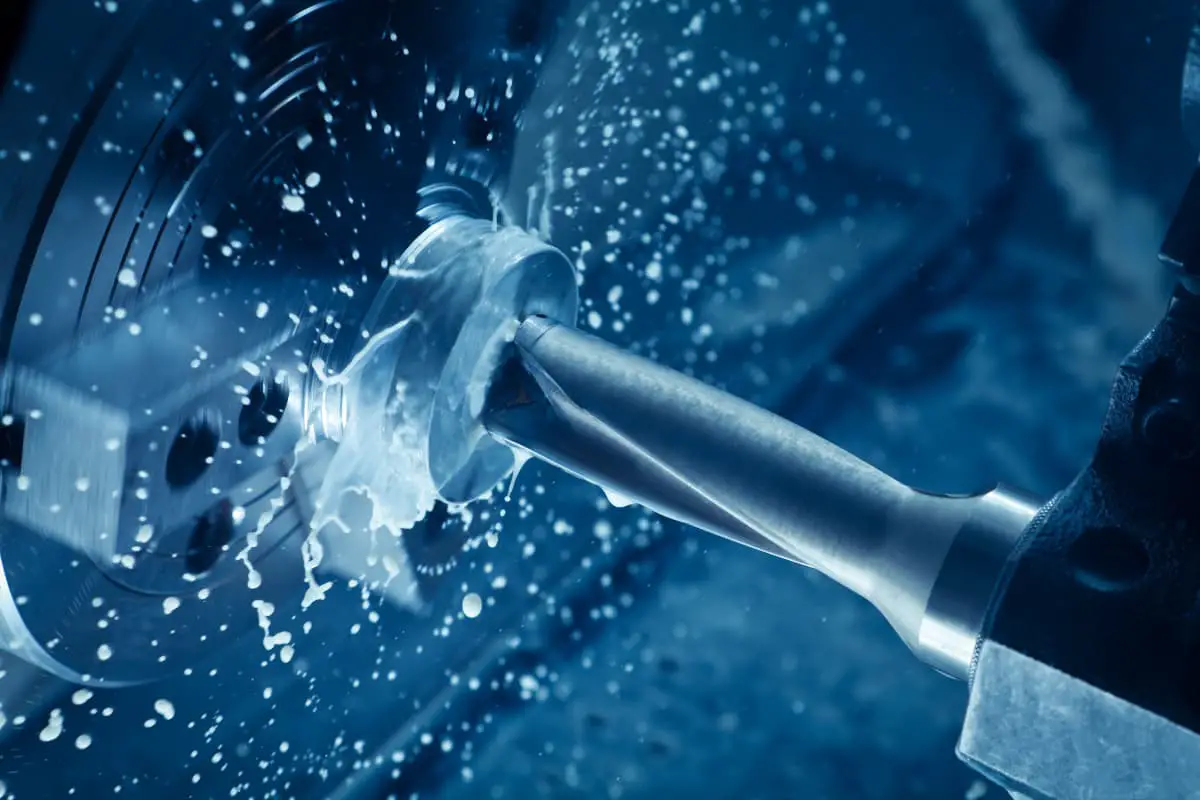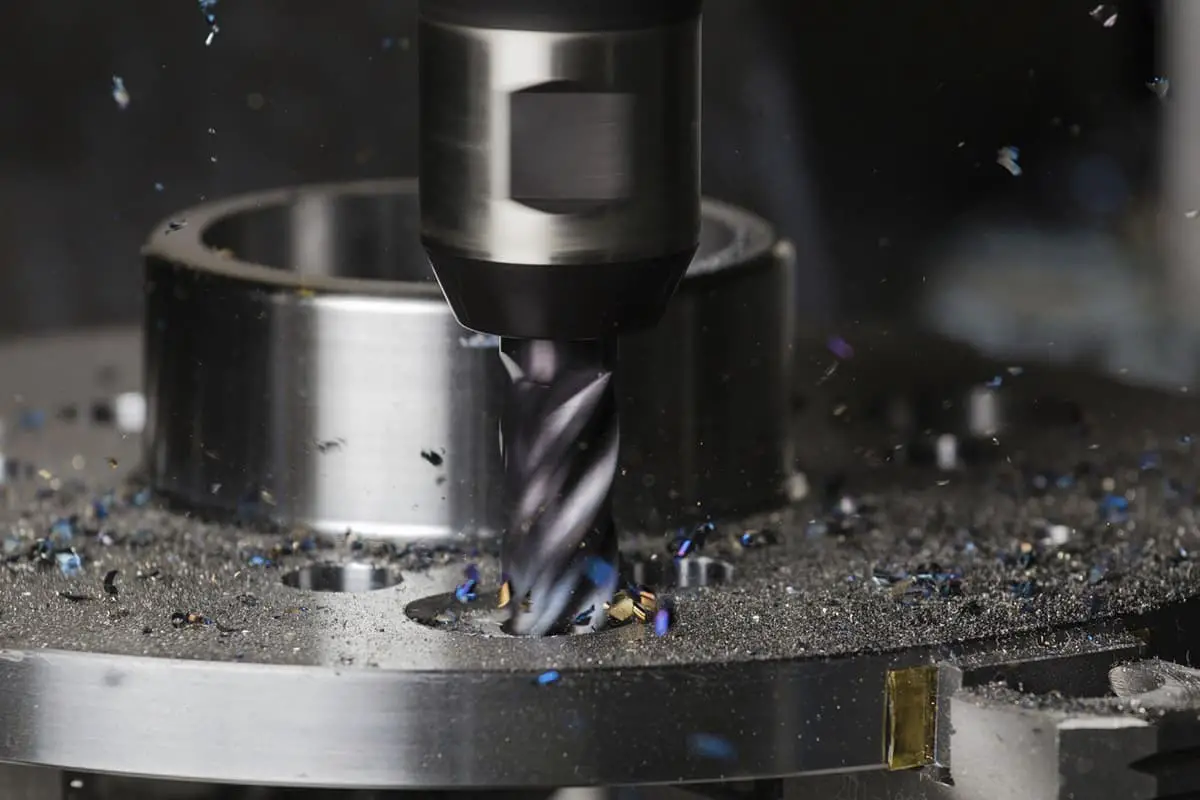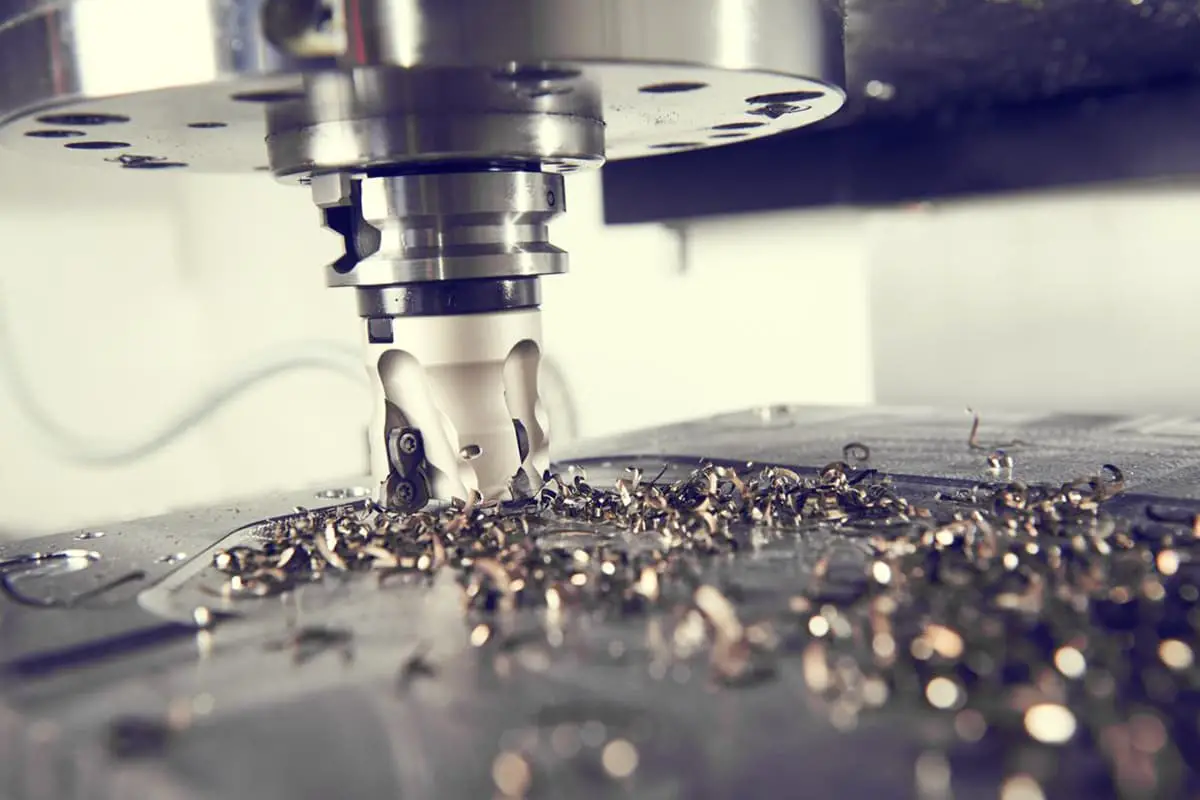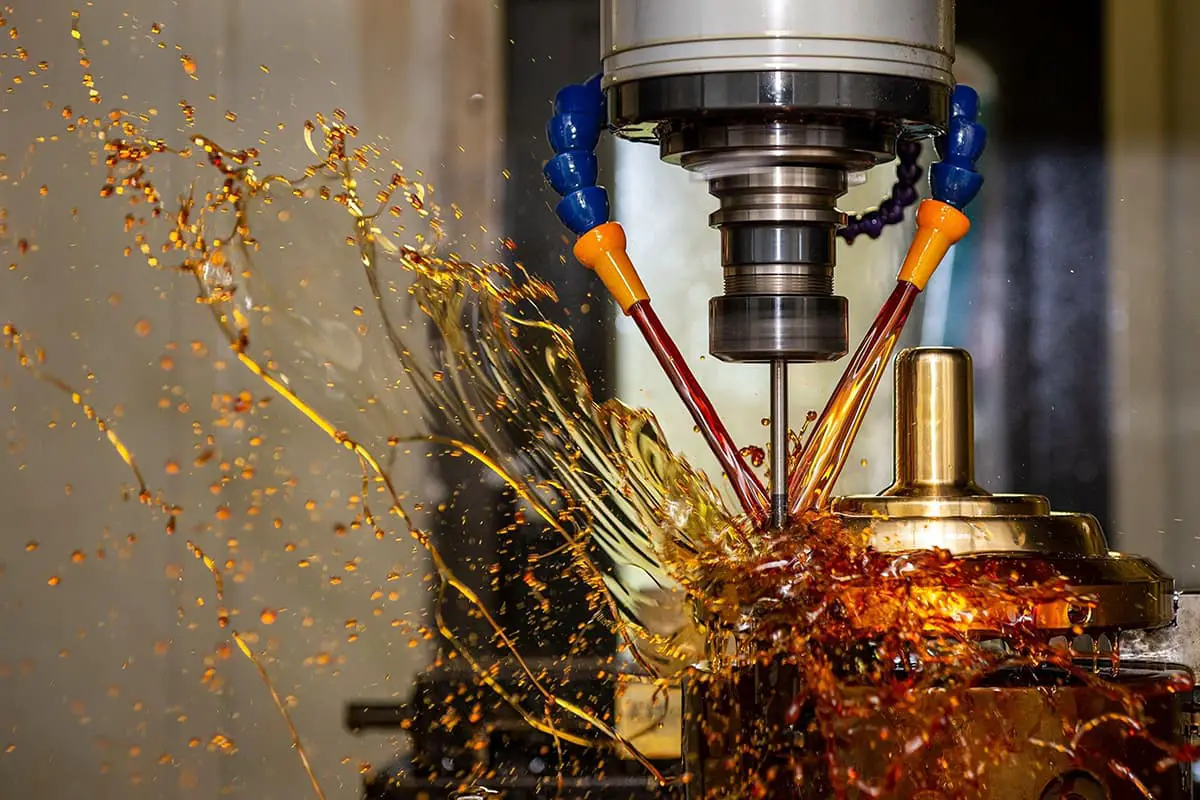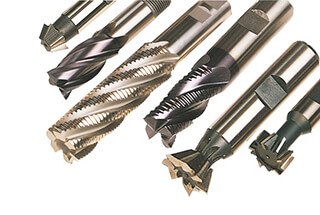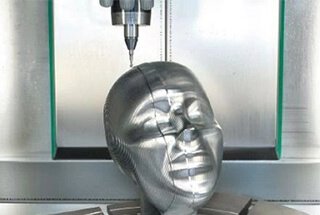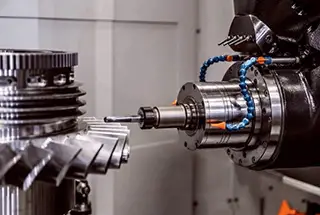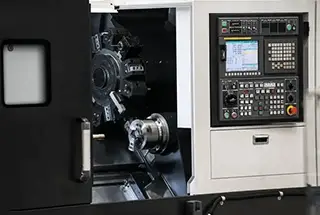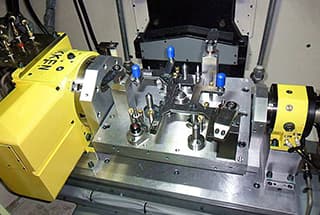
Ever wondered how to pick the perfect tool for your CNC lathe? This article dives into the types of CNC lathe tools, offering expert advice on selecting the right one for various tasks. From understanding different tool structures to grasping the importance of material selection, you’ll gain insights that can boost your machining efficiency and accuracy. Get ready to enhance your CNC lathe operations with these essential tips and techniques.
CNC lathes are becoming increasingly crucial in the manufacturing sector. To ensure the quality of turned workpieces, lathe tools must be adapted to meet the demands of high efficiency, high speed, and high automation.
See also:

This article will provide an overview of CNC lathe tools by discussing the different types of tools and how to select the appropriate ones.
The widespread use of CNC lathes in production has made the formation of a quantitative production line and the development of CNC programming a crucial aspect of CNC processing.
During the NC programming process, it is necessary to choose tools and determine cutting parameters in real-time through human-computer interaction.
Therefore, programmers must be knowledgeable about the methods of selecting cutting tools and the principles of determining cutting parameters to ensure the quality and efficiency of the parts being processed. This, in turn, maximizes the benefits of using CNC lathes and enhances the economic efficiency and production level of the enterprise.
The variety of CNC lathe tools is vast, each with different functions. Selecting the right tool based on different processing conditions is an essential step in program compilation, so a basic understanding of the types and characteristics of lathe tools is necessary.
The tools used on CNC lathes include external circular lathe tools, drill bits, boring tools, cutoff tools, thread processing tools, etc., among which external circular lathe tools, boring tools, and drill bits are the most commonly used.
The lathe tools, boring tools, cutoff tools, and thread processing tools used in CNC lathes are divided into integral types and machine-clamped types. Apart from the economical CNC lathes, the machine-clamped type of indexable lathe tools is now widely used.
The geometric parameters of the indexable lathe tools used in CNC lathes are formed by the combination of the structure shape of the blade and the orientation of the blade slot on the tool body.
Compared with general lathes, there is generally no essential difference, and their basic structure and functional characteristics are the same.

However, the processing procedures of CNC lathes are completed automatically, so the requirements for indexable lathe tools are different from those used in general lathes. The specific requirements and characteristics are shown in the following table.
Table 2-2 Characteristics of Indexable Lathe Tools
| Requirements | Features | Objective |
| High precision | Use cutting blades of M-grade precision level or higher; Employ precision-grade tool holders more often; Pre-set tool holders with micro-adjustment devices outside the machine. | Ensure the repeatability of blade positioning, facilitate coordinate setting, and guarantee the accuracy of the tool tip position. |
| High reliability | Use turning tools with highly reliable chip-breaking groove types or those with chip-breaking platforms and chip-breakers; Employ structurally reliable turning tools, using composite clamping structures and other structures with reliable clamping. | The chip breaking must be stable, with no disorder or ribbon-like chips; it must accommodate the rapid movement and repositioning of the tool holder, and there should be no loosening during the entire automatic cutting process. |
| Quick tool change | Adopting a turning tool system; Utilizing a quick-change tool holder. | Quickly swap out various forms of cutting components to complete a wide range of cutting processes, thereby enhancing production efficiency. |
| Blade material | Coated blades are commonly used. | Meet production pace requirements and enhance processing efficiency. |
| Shank cross-section | Many tool holders use square tool rods, but due to significant differences in tool holder system structures, some require the use of specialized tool rods. | The tool rod matches the tool holder system. |
Indexable turning tools can be categorized according to their uses into external circle turning tools, profiling turning tools, end face turning tools, internal circle turning tools, grooving turning tools, parting off turning tools, and threading turning tools, as shown in Table 2-3.
Table 2-3 Types of Indexable Turning Tools
| Type | Major cutting angle | Applicable Machine Tools: |
| External Turning Tool | 900、500、600、750、450 | Conventional Lathe and CNC Lathe, |
| Profile Turning Tool | 930、107.50 | Profile Lathe and CNC Lathe, |
| End Face Turning Tool | 900、450、750 | Conventional Lathe and CNC Lathe, |
| Internal Turning Tool | 450、600、750、900、910、930、950、107.50 | Conventional Lathe and CNC Lathe, |
| Parting Tool | Conventional Lathe and CNC Lathe, | |
| Thread Cutting Tool | Conventional Lathe and CNC Lathe, | |
| Grooving Tool | Conventional Lathe and CNC Lathe. |

① Lever type:
As shown in Figure 2-16, it is composed of a lever, screw, shim, shim pin, and cutting insert. This method relies on the force exerted by the lever pressing against the screw to clamp the cutting insert.
It suits all kinds of positive and negative rake angles, with an effective rake angle range of -60° to +180°. The chips can flow without obstruction, and the cutting heat does not affect the screw hole and lever. The two slot walls provide strong support for the cutting insert and ensure indexing accuracy.
② Wedge type:
As shown in Figure 2-17, it is composed of a clamping screw, shim, pin, wedge, and cutting insert. This method relies on the compressive force between the pin and the wedge to fasten the cutting insert.
It suits all kinds of negative rake angles, with an effective rake angle range of -60° to +180°. There are no slot walls on both sides, which is suitable for profile cutting or reverse operation with clearance.
③ Wedge clamping type:
As shown in Figure 2-18, it is composed of a clamping screw, shim, pin, pressing wedge, and cutting insert. This method relies on the downward force of the pin and wedge to clamp the cutting insert.
It has the same features as the wedge type, but the chip flow is not as smooth as the wedge type.
In addition, there are other types such as bolt pressing, hole pressing, and upper pressing.

The quality of cutting performance of tool materials directly affects the productivity of cutting operations and the quality of the machined surface.
The emergence of new tool materials often significantly improves productivity, becoming the key to processing certain difficult-to-machine materials, and prompting the development and upgrade of machine tools.
(1) Requirements for the material of the cutting parts of the tool
During metal cutting, the cutting part of the tool is subjected to high pressure, high temperature, and intense friction; when the machining allowance is uneven or the cutting surface is discontinuous, the tool is also subjected to impact.
To ensure that the tool can handle the cutting work, the material for the cutting parts of the tool should have the following cutting performance:
① High hardness and wear resistance
The tool must be harder than the workpiece to cut chips from it. At room temperature, the hardness of the tool should be above 60HRC. The higher the hardness of the tool material, the better its wear resistance.
② Sufficient strength and toughness
To withstand the pressure and impact during the cutting process, the tool material must have sufficient strength and toughness.
③ High heat resistance and chemical stability
Heat resistance refers to the ability of the tool material to maintain its cutting performance under high-temperature conditions. Heat resistance is expressed in terms of heat resistance temperature.
The heat resistance temperature refers to the maximum temperature that can basically maintain the cutting performance of the tool. The better the heat resistance, the higher the allowable cutting temperature for the tool material.
Chemical stability refers to the ability of the tool material to resist chemical reactions with the workpiece material and surrounding media under high-temperature conditions, including antioxidation and anti-adhesion abilities.
The higher the chemical stability, the slower the tool wear. Heat resistance and chemical stability are the main indicators for measuring the cutting performance of the tool.
In addition to excellent cutting performance, tool materials should also have good processability and economy.
These include: tool steel should have minimal hardening deformation, shallow decarburization layer, and good hardenability; high hardness materials should have good grinding performance; hot-rolled forming tools should have good high-temperature plasticity; welding performance of materials used for welding tools should be good; the tool materials used should be as rich and inexpensive as possible in our country’s resources.
(2) Commonly Used Cutting Tool Materials

The commonly used cutting tool materials can be categorized into four types: high-speed steel (HSS), cemented carbides, ceramic materials, and ultra-hard materials.
① High-Speed Steel
High-speed steel is an alloy tool steel that contains a significant amount of alloy elements such as tungsten, molybdenum, chromium, and vanadium, with a carbon mass fraction of around 1%.
After heat treatment, the hardness of HSS reaches 62-65 HRC, with a heat resistance temperature of 550-600°C, a bending resistance of around 3500 MPa, and an impact toughness of approximately 0.3 MJ per square meter.
HSS has good strength and toughness, can withstand impact, and is easy to grind, making it the primary material for manufacturing complex-shaped tools like drill bits, milling cutters, broaching tools, thread cutters, and gear cutters. Due to its heat resistance limitation, HSS cannot be used for high-speed cutting.
② Cemented Carbides
Cemented carbides are formed by pressing and sintering a powder of high hardness, high melting point tungsten carbide (WC), titanium carbide (TiC), tantalum carbide (TaC), niobium carbide (NbC), using cobalt (Co) as a binder.
Its hardness at room temperature is 88-93 HRA, with a heat resistance temperature of 800-1000°C, which is much harder, more wear-resistant, and heat-resistant than HSS.
Therefore, the allowable cutting speed of cemented carbide tools is 5-10 times higher than that of HSS tools. However, its bending resistance is only 1/2 to 1/4 of HSS, and impact toughness is just a fraction of HSS. Cemented carbides are brittle and sensitive to impact and vibration.
Due to the significant increase in productivity enabled by cemented carbide tools, they are not only adopted for a vast majority of turning tools, planing tools, face milling cutters, but also a considerable quantity of drill bits, reamers, and other milling cutters.
Nowadays, even complex broaching tools, thread cutters, and gear cutters are gradually being made from cemented carbides.
In our country, there are currently three types of commonly used hard alloys:
Tungsten carbide alloys, composed of WC and Co, are coded as YG, similar to the K category in ISO. They are mainly used for processing brittle materials such as cast iron, nonferrous metals, and non-metallic materials.
Common brands include YG3, YG6, and YG8. The number indicates the percentage of Co, with the remainder being the percentage of WC.
In hard alloys, Co acts as a binder. The more Co the alloy contains, the better its toughness. Therefore, YG8 is suitable for rough machining and interrupted cutting, YG6 is suitable for semi-finished machining, and YG3 is suitable for fine machining and continuous cutting.
Tungsten titanium cobalt alloys are composed of WC, TiC, and Co, and are coded as YT, similar to the P category in ISO. Since TiC is harder, more wear-resistant, and heat-resistant than WC but also more brittle, YT class alloys have higher hardness and heat resistance than YG class alloys. However, they are less resistant to impact and vibration.
As plastic deformation is significant when machining steel and the friction between the chip and the tool is severe, cutting temperatures are high. But since the chips are strip-shaped and the cutting is relatively stable, YT class hard alloys are suitable for processing steel.
Common types of tungsten titanium carbide alloys include YT30, YTl5, and YT5. The number indicates the percentage of TiC. Therefore, YT30 is suitable for fine machining and continuous cutting of steel, YTl5 is suitable for semi-finished machining, and YT5 is suitable for rough machining and interrupted cutting.
Tungsten titanium tantalum (niobium) alloys are composed of a small amount of TaC or NbC added to the YT class, and are coded as YW, similar to the M category in ISO. The hardness, wear resistance, heat resistance, bending strength, and impact toughness of YW class hard alloys are all higher than those of the YT class, and the last two indices are similar to the YG class.
Therefore, YW class alloys can process both steel and cast iron, and non-ferrous metal chips, and are known as universal hard alloys. Common brands include YWl and YW2, the former is used for semi-finished and fine machining, and the latter is used for rough and semi-finished machining.
Currently, hard alloy cutting tools often adopt coatings of high-hardness materials such as TiC C , TiN and Al2O3. The lifespan of coated carbide tools is 2 to 10 times longer than their uncoated counterparts.
③ Ceramic Materials
Ceramic materials have higher hardness, wear resistance, heat resistance, and chemical stability than carbides, but they are more brittle. They are mainly used for precision machining.
The materials used for ceramic cutting tools include alumina ceramics, metal ceramics, silicon nitride ceramics (Si3N4), and Si3N4 composite ceramics. Since the 1980s, ceramic cutting tools have rapidly developed.
The bending strength and impact toughness of metal ceramics, silicon nitride ceramics, and composite ceramics are close to those of carbides, making them suitable for semi-finished machining and rough machining with cutting fluid.
④ Superhard Materials
Synthetic diamonds are created from graphite under high temperature and pressure through the catalyst action of metals. Synthetic diamonds are used to make diamond grinding wheels and, after polycrystallization, to produce synthetic diamond blades based on carbide substrates for cutting tools.
Diamonds are the hardest material in nature, with extremely high wear resistance and sharp cutting edges that can cut very thin chips. However, they are very brittle and have strong affinity with ferrous metals, so they can’t be used for rough machining or for cutting ferrous chips.
Currently, synthetic diamonds are mainly used as abrasives for grinding carbides. They can also be used for high-speed precision turning and boring of non-ferrous chips and their alloys.
Cubic Boron Nitride (CBN) is transformed from hexagonal crystal boron nitride (also known as white graphite) under high temperature and high pressure. CBN possesses an extremely high hardness and abrasion resistance, second only to diamond, and can withstand high temperatures up to 1400 to 1500°C.
It does not chemically react with ferrous metals at 1200 to 1300°C.
However, it can react chemically with water at high temperatures, so it is generally used for dry cutting. CBN is suitable for precision machining of hardened steel, chilled cast iron, high-temperature alloys, thermal spray materials, hard alloys, and other difficult-to-process materials.

The “Select Blade Shape” icon is shown in Figure 2-20. The main parameter selection methods are as follows:
① Cutting Edge Angle
The size of the cutting edge angle determines the strength of the blade. Where the structure and rigidity of the workpiece permit, a cutting edge angle as large as possible should be chosen. Usually, this angle is between 35° and 90°.
In Figure 2-19, the R-type circular blade has good stability during heavy cutting but is prone to generating large radial forces.
② Blade Shape Selection
The shape of the blade is mainly chosen based on the surface shape of the workpiece being processed, the cutting method, tool life, and the number of blade rotations, among other factors.
Equilateral triangle blades can be used for external circular turning tools, end face turning tools, and internal hole turning tools with a major cutting edge angle of 60° or 90°. Due to the small cutting edge angle, poor strength, and low durability of this blade, it should only be used with smaller cutting quantities.
Square blades have a cutting edge angle of 90°, which is larger than the 60° of equilateral triangle blades, and thus their strength and heat dissipation performance are enhanced. These blades are fairly versatile and are mainly used for external circular turning tools, end face turning tools, and boring tools with a major cutting edge angle of 45°, 60°, 75°, etc.
Pentagonal blades have a cutting edge angle of 108°, and they offer high strength and durability, as well as a large heat dissipation area. However, they generate large radial forces during cutting and should only be used in situations where the machining system has good rigidity.
Diamond-shaped and circular blades are primarily used for shaping surfaces and arc surface processing. Their shape and size can be determined by referencing national standards in combination with the machining object.
CNC lathes are requiring increasingly stable, durable, and easily replaceable tools.
In recent years, the use of CNC machine clamp indexable tools has become widespread and they play a significant role in the machining process, making up a large portion of the tools used.
What are the Types of CNC Lathe Tools?
CNC Lathe tools can be divided into three categories based on their structure: integral type, inlay type, and special type.
Additionally, they can be classified into four groups based on the material used for manufacturing the tools: diamond tools, high-speed steel tools, cemented carbide tools, and tools made from other materials such as ceramics.
CNC Lathe tools can also be classified based on the number of blades they have. They are either single-blade tools or multi-blade tools. Single-blade tools have only one main cutting edge, while multi-blade tools have two or more main cutting edges.
Compared to conventional lathe tools, CNC tools have different requirements, characterized by:
Serialization and standardization are also necessary for efficient chip removal and to facilitate programming and tool management.
The selection of tools in the CNC machining process is performed through human-machine interaction.
See also:
The programmer must make a proper selection of tools and tool holders for the CNC lathe, taking into account various factors such as processing capacity, processing procedures, workpiece material properties, cutting parameters, and more.
The general rule for tool selection is to prioritize tools that are rigid, durable, accurate, and easy to install and adjust.
While still meeting the processing requirements, it is recommended to choose tools with a shorter shank to enhance the rigidity during processing.
In the process of using an economical CNC lathe, grinding, measurement, and tool replacement are performed manually, resulting in a long auxiliary time. It’s crucial to arrange the tool sequence efficiently to minimize this auxiliary time.
The general principles to follow are:
It’s important to note that the durability and accuracy of the tool are related to its cost. Although selecting a high-quality tool increases the cost of the tool, it reduces the overall processing cost by improving the quality and efficiency of processing.
Through this discussion of CNC lathe tools, we learn that the types of tools can be classified based on the tool structure, manufacturing materials, and number of cutting edges. The selection of tools takes place through human-machine interaction in the CNC machining process. As a crucial component in CNC lathe processing, the tool plays a significant role.

